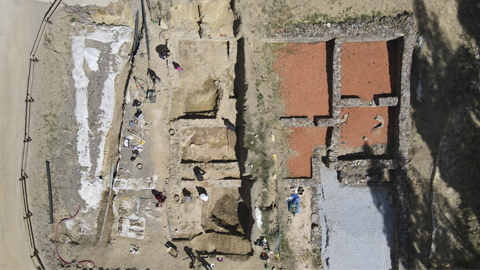Llívia's Roman forum can be seen in all its splendour
The dig campaign conducted this year by UAB archaeologists at the Roman forum in Llívia has allowed them to have an overall vision of the site and make new discoveries, such as a coin from the 4th century CE, a ring and several fragments of a marble sculpture, as well as a lateral staircase of the temple, a very rare element not commonly found in Roman temples built in the Iberian Peninsula.

This year, a strip of dirt was removed from the central part of the site, where the basic town services passed, and this has allowed researchers to have a full vision of the site and a complete stratigraphy ranging from modern times to the late antiquity, the 3rd century CE and the moment the Roman Empire was founded by Augustus (1st century BCE). "The chronological evolution of the forum begins to make sense. And it represents an improvement in the conditions of our work space, as it allows us to continue digging different spaces of the forum from east to west, and also focus on recovering the remains, with the aim of making this an enjoyable place for both the neighbours and visitors", explains César Carreras, director of the dig and lecturer at the Department of Antiquity and Medieval Studies.
The work conducted during this campaign also managed to yield elements researchers qualify as "exceptional", such as a coin from the 4th century CE and a ring. Fragments of a Carrara marble sculpture were also recovered, including the head of what could be a deer and a female leg. And finally, in the stratum corresponding to the second phase (3rd to 4th century CE), future digs will help archaeologists confirm a discovery which they believe corresponds to a lateral staircase of the temple of Venus Genetrix from the Forum of Caesar in Rome, an extremely exceptional characteristic not commonly found in Roman temples built in the Iberian Peninsula.
To conduct this year's dig, the archaeologists worked in collaboration with researchers from the Catalan Institute of Classical Archaeology (ICAC) and a dozen students from the UAB bachelor's degree in Archaeology.